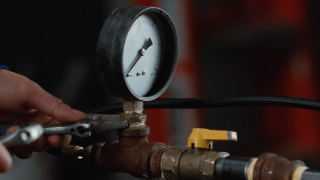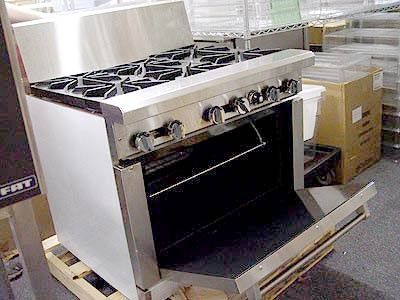On this page underneath you might get a good deal of awesome expertise about Plumbing Basics Every Homeowner Should Know.

Plumbing is a necessary aspect of any type of home, responsible for supplying clean water for alcohol consumption, cooking, and showering, in addition to getting rid of wastewater securely. Comprehending the essentials of home plumbing is vital for every house owner to make certain correct maintenance, troubleshooting, and, if needed, repairs. In this newbie's guide, we'll cover the fundamental principles of home plumbing to assist you become a lot more acquainted with exactly how it works.
Water Supply System
The water system system brings clean water right into your home from a local water source or an exclusive well. It contains a major water line that attaches to your home's plumbing system, typically situated underground. A water meter measures the quantity of water consumed, while a shut-off valve enables you to control the circulation of water right into your home.
Plumbing Components
Plumbing components are tools that supply water to different parts of your home and consist of sinks, taps, bathrooms, showers, tubs, and devices such as dishwashers and washing equipments. Each component is connected to the water system by means of pipelines and installations and might have its shut-off shutoff for maintenance or emergency situations.
Water Heater
The water furnace is in charge of home heating water for domestic usage, consisting of bathing, food preparation, and cleaning. Typical types of water heaters consist of tank-type water heaters, tankless (on-demand) hot water heater, and heat pump hot water heater. The hot water heater is linked to the water system system and delivers warm water to plumbing fixtures as required.
Water drainage System
The drainage system gets rid of wastewater from your home and carries it away to a sewage treatment center or septic system. It includes a network of pipelines, fittings, and fixtures that move wastewater from plumbing fixtures to the major drain line or septic system. Proper water drainage is important to avoid clogs, backups, and sewage leakages.
Ventilation System
The air flow system aids maintain correct air pressure and prevent drain gases from entering your home. Air vent pipes, additionally referred to as vent stacks, extend from plumbing fixtures to the roof covering, allowing sewer gases to get away securely outdoors. Air flow pipelines also allow air to go into the drain system, helping with smooth wastewater flow and protecting against suction or vacuum cleaner effects.
Common Plumbing Tools
Having the right tools handy is vital for carrying out standard plumbing repair work and upkeep tasks. Usual plumbing tools include adjustable wrenches, pipe wrenches, pliers, pipeline cutters, hacksaws, plungers, augers (or drain snakes), and Teflon tape. Having these devices conveniently available can help you take on small plumbing problems successfully.
Fundamental Plumbing Fixings
While some plumbing fixings may require specialist help, lots of usual problems can be resolved with standard do it yourself strategies. Knowing just how to deal with a dripping faucet, unclog a drain, change a commode flapper, or fix a trickling showerhead can conserve you time and money on plumbing repairs.
Verdict
Understanding the basics of home plumbing is necessary for every house owner to preserve a safe, practical, and efficient plumbing system. By familiarizing yourself with the supply of water system, plumbing fixtures, drainage system, ventilation system, typical plumbing devices, and basic repair services, you can with confidence resolve small plumbing concerns and guarantee your home's plumbing system operates smoothly.
Plumbing for Beginners: A Comprehensive Guide
If you’re a beginner when it comes to plumbing, don’t worry; you’re not alone. Plumbing may seem intimidating, but with the right knowledge and a little practice, you can handle many common plumbing issues on your own. In this comprehensive guide, we will demystify the world of plumbing for beginners, providing you with the basic knowledge and skills needed to tackle common plumbing problems and even take on some DIY plumbing projects.
The Importance of Basic Plumbing Knowledge for Beginners:
First and foremost, basic plumbing knowledge gives you a solid foundation. It helps you grasp the key concepts and terminology that are essential in this field. By learning the basics, you’ll be able to build upon that knowledge and tackle more complex plumbing tasks in the future.
Having a basic understanding of plumbing also enables you to handle common issues that may arise in your home. Picture this: a leaky faucet or a clogged drain. With some basic plumbing knowledge, you’ll have the confidence to troubleshoot and fix these problems on your own. It saves you from unnecessary expenses and the hassle of waiting for a professional to arrive.
As a beginner, learning the basics of plumbing empowers you to take care of your own home. It gives you a sense of independence and self-reliance. You’ll no longer have to rely solely on professionals for every small issue that pops up. Instead, you can handle many tasks yourself, saving time and money in the process.
Remember, everyone starts as a beginner. Embrace the learning process and take small steps to expand your plumbing knowledge. There are plenty of online resources, tutorials, and even local workshops that talk about plumbing for beginners.
Essential Tools for Plumbing for Beginners
As you start your plumbing journey, having the right tools in your toolbox is crucial. Let’s explore some of the must-have tools:
Adjustable Wrench:
This versatile tool is a staple in any plumber’s toolbox. It allows you to tighten or loosen nuts and bolts of various sizes. Make sure to have an adjustable wrench with a comfortable grip.
Pipe Wrench:
A pipe wrench is specifically designed for gripping and turning pipes. It has serrated jaws that provide a strong grip, making it easier to loosen or tighten threaded pipes and fittings.
Plunger:
The plunger is a simple yet effective tool for clearing clogged drains and toilets. It creates suction when you push and pull, helping to dislodge blockages. Keep a good-quality plunger handy for those unexpected clogs.
Pipe Cutter:
When it comes to cutting pipes, a pipe cutter is your go-to tool. It creates clean, precise cuts without damaging the pipe. Look for a pipe cutter that can handle the pipe sizes you’re working with.
Hacksaw:
A hacksaw is useful for cutting through pipes, screws, and other materials. It’s a versatile tool that can handle different cutting tasks. Remember to use a blade suitable for cutting metal.
Tape Measure:
Accurate measurements are crucial in plumbing. A tape measure allows you to measure pipe lengths, distances, and dimensions accurately. Opt for a sturdy tape measure that extends a good length.
Pliers:
Pliers come in handy for various tasks, such as gripping, bending, and cutting. Slip-joint pliers with adjustable jaws are great for gripping pipes, nuts, and bolts.

Do you appreciate reading about Plumbing Basics For Every Home: The HomeTriangle Guide? Put a short review down below. We'd be happy to see your responses about this blog. In hopes to see you back again before long. Do you know about anybody else who is curious about What to Know About Plumbing: Basics, Tips, and Insights? Take a moment to share it. Thanks for going through it.
Website